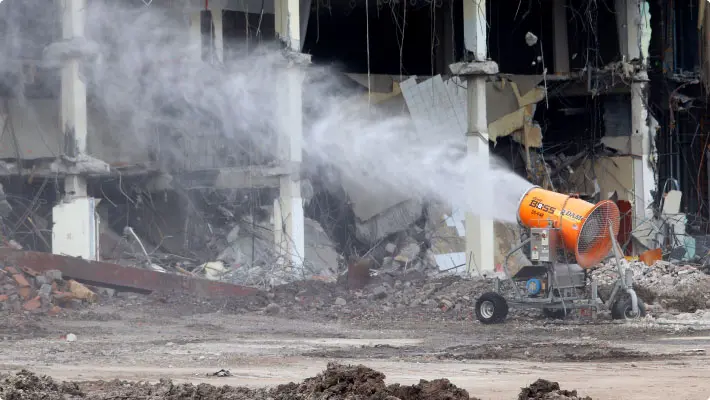Dust control plays a crucial role in ensuring workplace safety. By understanding the hazards of dust particles and implementing effective BossTek control measures, you can protect your employees from potentially life-threatening health issues and prevent accidents related to dust. What’s more, a dust-free work environment minimizes distractions, reduces accidents, and improves air quality, leading to enhanced productivity and efficiency. In this article, we will explore the importance of dust control and its impact on overall workplace safety.
Understanding risks associated with dust exposure
Dust, in its various forms, can pose significant risks to workers’ health and safety. It can result from processes such as cutting, grinding, sanding, or general material handling. The particles generated during these activities can be harmful when inhaled or accumulate on surfaces, causing slips and falls. Inhaling dust particles can have severe health consequences. Some common health risks associated with dust exposure include respiratory issues, allergies, and long-term lung diseases. Additionally, certain types of dust, such as silica dust, can cause serious conditions like silicosis, a potentially fatal lung disease.
Effective dust control measures
Engineering controls aim to minimize dust generation and dispersion at the source. These measures may include ventilation systems, dust collectors, and dust suppression equipment. Properly designed engineering controls are the most effective means of dust control. Administrative controls involve implementing policies, procedures, and work practices to minimize dust exposure. This may include proper housekeeping, regular equipment maintenance, and employee training on dust control practices. While not a primary control measure, the use of personal protective equipment, such as respirators and protective clothing, can be crucial in protecting workers from dust exposure, especially in situations where other control methods are insufficient.
Benefits of dust control for workplace safety
Improved employee health
Implementing effective dust control measures ensures the well-being of employees by reducing the risk of respiratory ailments, allergies, and other dust-related health conditions. This leads to a healthier and more productive workforce.
Enhanced productivity and efficiency
A dust-free work environment promotes better concentration, minimizes distractions, and reduces the likelihood of accidents and equipment failures. This, in turn, leads to increased productivity and efficiency among workers.
Compliance with occupational safety standards
By implementing robust dust control measures, organizations can ensure compliance with occupational safety and health regulations. This not only protects employees but also helps avoid costly fines and legal liabilities.
Implementing a comprehensive dust control program
Thoroughly assessing the workplace to identify all potential sources of dust is critical in developing an effective dust control program. This includes both obvious and hidden sources. Once you identify dust sources on your site, you must conduct risk assessments to determine the severity of the potential hazards. This helps prioritize control measures and allocate resources effectively. Based on the identified risks, selecting the most appropriate control measures is crucial. This may involve a combination of engineering controls, administrative controls, and the use of personal protective equipment. Implementing a successful dust control program requires regular monitoring and maintenance of existing control measures. This ensures their continued effectiveness and identifies any potential issues that may arise.
Dust control plays a vital role in ensuring the overall safety of workplaces. By understanding the hazards of dust and implementing effective control, you can protect your employees from potentially life-threatening health issues and prevent accidents related to dust. Prioritizing dust control not only improves workplace safety but also enhances productivity, compliance with regulations, and the overall well-being of the workforce.




